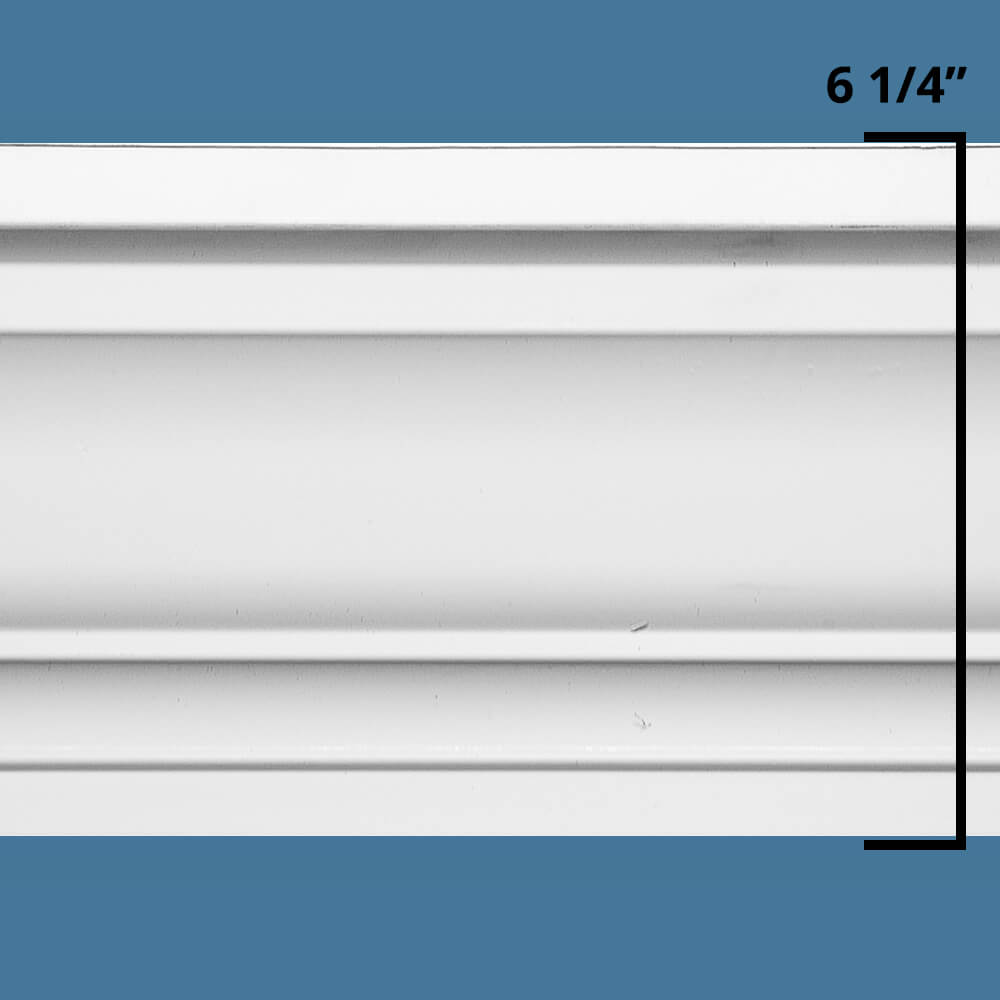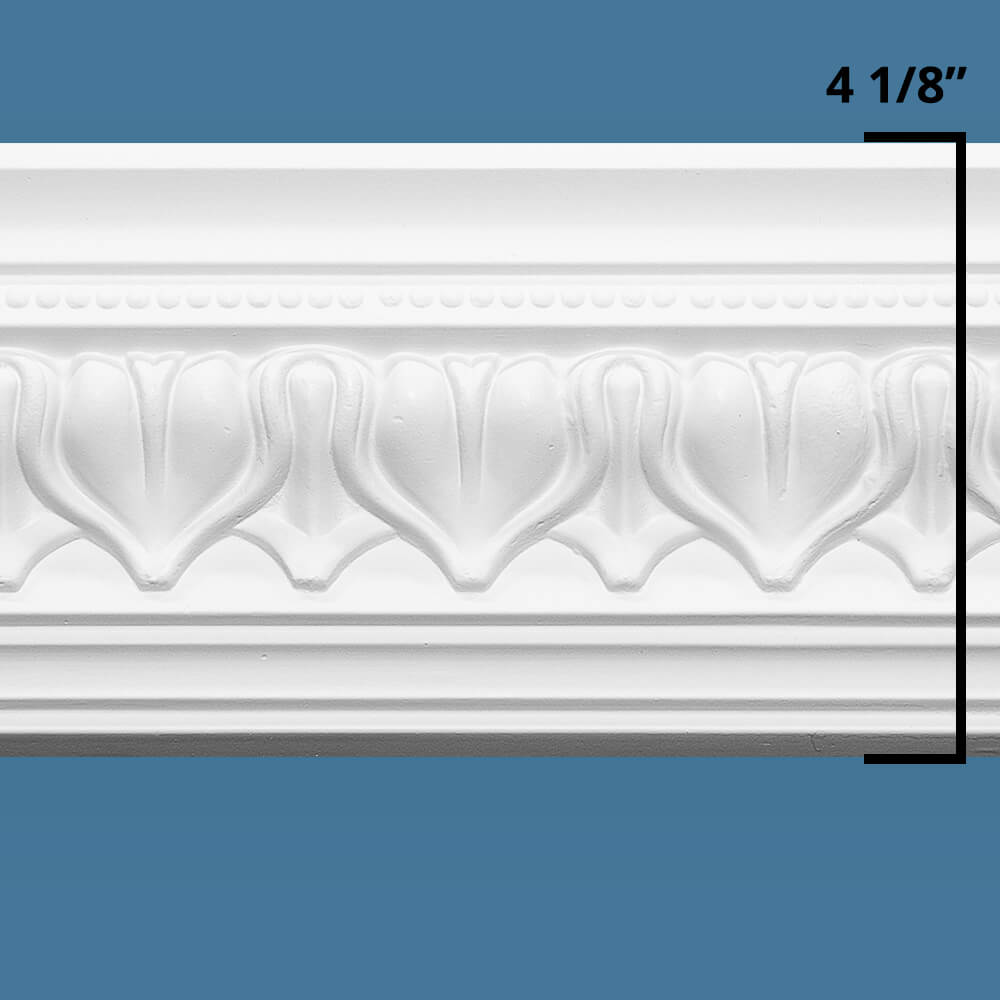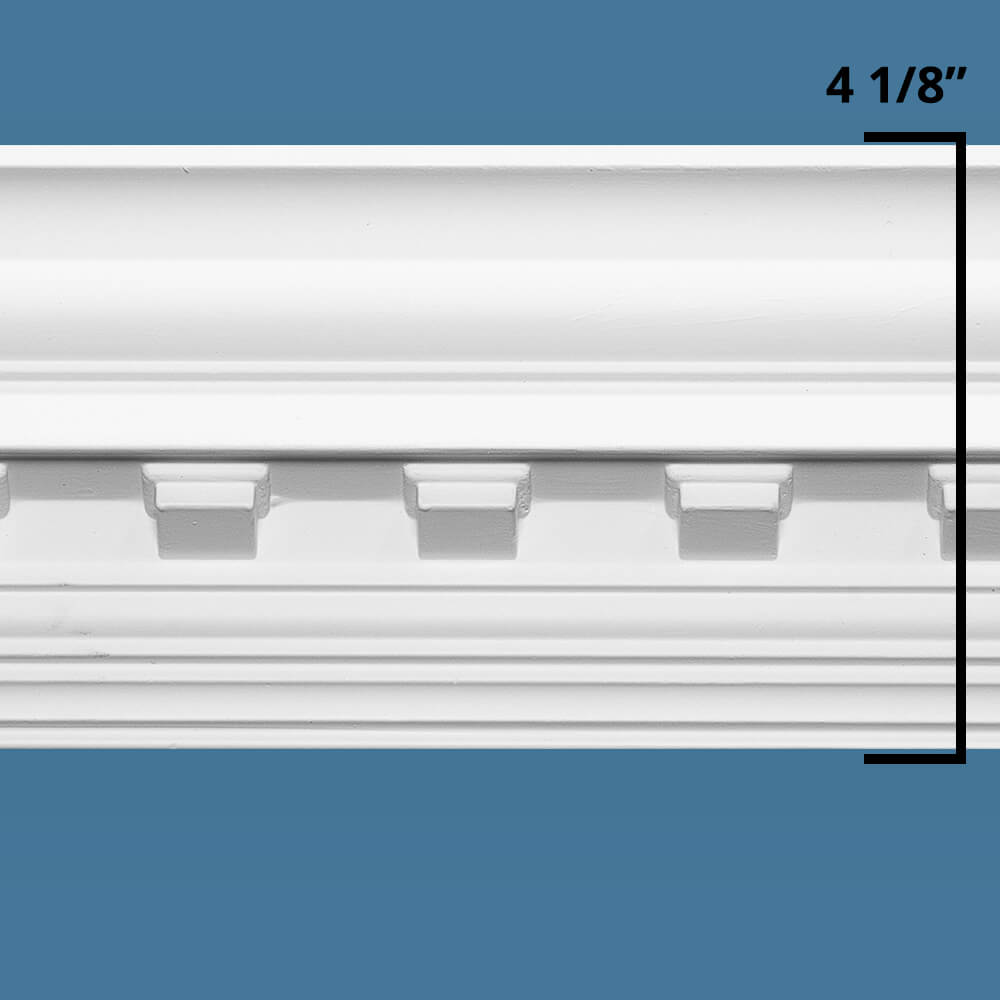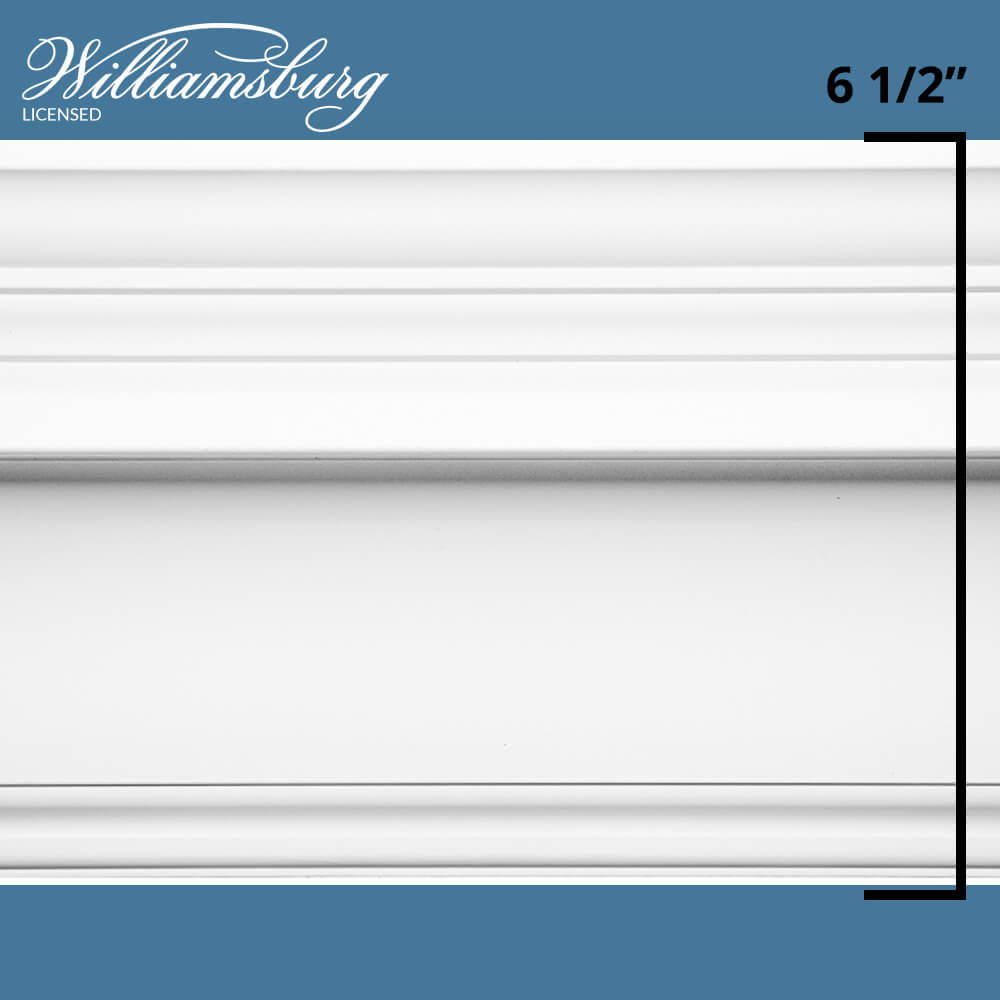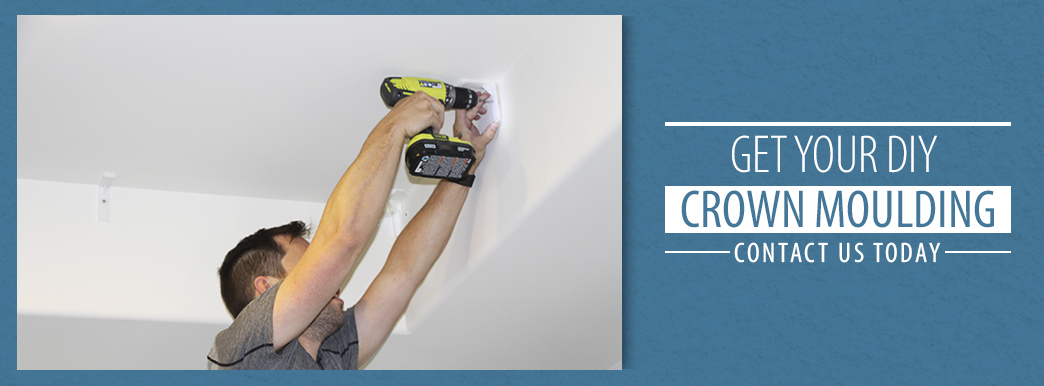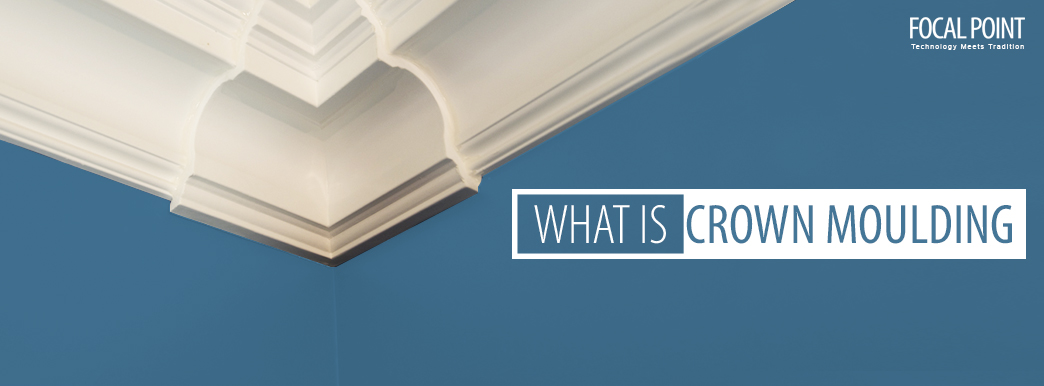
Crown molding is a decorative element that is installed where the wall meets the ceiling. Molding typically comes in wood or plaster, but you can find it in other materials such as polyurethane as well. You've probably seen baseboard molding or molding around doors and windows, but crown molding adds something extra to a room.
There is more to crown molding than meets the eye. Read on to learn what crown molding is used for, where to purchase it and more.
Example Styles & Widths of Crown Molding You Can Buy
Crown Molding Versus Crown Moulding
Before we explain the uses and benefits of crown molding, we'll address the different spellings out there. There is no difference between crown molding versus moulding — except for the spelling, of course. "Moulding" is the British spelling while "molding" is the American version. Think about the spelling of "colour" versus "color" or "favourite" versus "favorite." The only difference is the added "u."
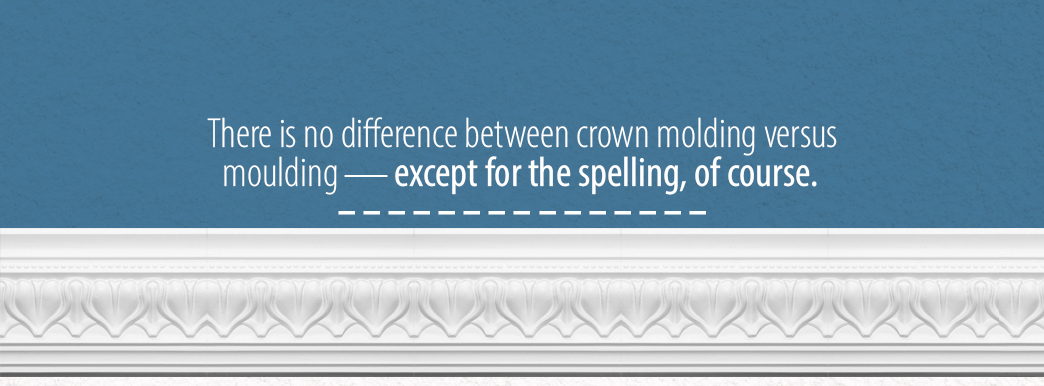
Many American sellers of crown molding use the British spelling even though they're the same product. So why use the British spelling in America? The alternate spelling can evoke the historical and refined use of crown molding. Think of the intricate designs you find in some varieties. The traditional and elegant details pair with the classic nature of British spelling. Spelling aside, though, crown molding creates a sophisticated addition to almost any space.
What Is Crown Molding Used For?
Crown molding is used mostly for decoration today. In the past, crown molding served to cover cracks between the wall and the ceiling. In modern uses, crown molding appears in places other than the top of the wall, such as:
- Cabinets: Add interest to your upper cabinets with crown molding. If your kitchen feels like it's missing something, try some trim. Crown molding appears to add height to your ceiling and an attractive detail to your space.
- Entryways: Archways and other openings become focal points with the addition of crown molding. Structural elements such as entryways are the perfect canvas for classic crown molding.
- Mantels: Enhance your room by adding even more detail to your fireplace. Change the style of a space or bring out the vintage look of a room by adding crown molding to a fireplace mantel. The trim will create an even more eye-catching furnishing.
- Bookshelves: If you're adding the classic look of crown molding throughout a room, don't forget about your bookshelves. Enhance a plain bookshelf with the addition of ornate crown molding to add height and dimension.
- Hiding wires: Hollow crown molding helps conceal cables or wires when you add new wiring to your home. Save yourself the trouble of creating holes in your walls by hiding wiring in your crown molding.
No matter the style you use or where you use it, crown molding transforms a room. It makes a space more grown-up, classy or opulent. Crown molding also adds a finishing touch to an area, making it perfect for finished basements as it creates a homier space. The decorative addition is great for walls and ceilings, but feel free to get creative to enhance your space.
Common Types of Crown Molding
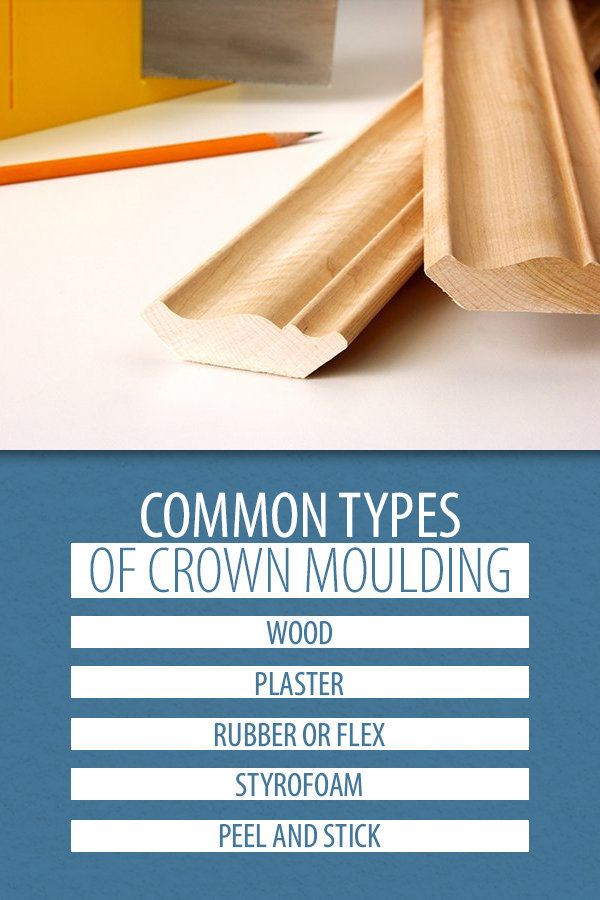
You can find many types of crown molding available in all different materials. For the DIYer, not every material makes the best choice for a project. Before we offer an alternative, consider the difficulties of these materials:
- Wood: Wood is one of the more traditional types of crown molding. Unfortunately, the material is expensive to use. It also requires skill when cutting and installing, meaning that it is not a material every DIYer can pick up and work with efficiently.
- Plaster: Like wood, plaster is a common choice for crown molding. It is not a good choice for DIYers since the material is usually custom-molded. Plaster is also more difficult to work with, so when combined with the higher price, it isn't worth the hassle for a DIY project.
- Rubber or flex: As the name implies, this material is flexible. Rubber crown molding can be lightweight and workable, making it an option for curved rooms. However, flex crown molding is not durable. It rips, gets scratches and dents if you do not work with it carefully. Rubber also has a natural sheen, which gives its finish a less professional look than other materials.
- Styrofoam: A lightweight and affordable material, styrofoam may seem like a good option at first. Certain foam crown molding may work well in your home, but styrofoam is too fragile. You can easily damage it when installing since it is so lightweight. Consider stronger alternatives that still come with the benefits of styrofoam instead.
- Peel and stick: Many DIYers opt for peel and stick crown molding in their projects. Made of thin plastic, this crown molding is a cheap and quick alternative. Though it is straightforward to install, the final results of peel and stick crown molding don't provide a professional finish. The thin plastic and adhesive cannot hold their strength over time, either, meaning the work you put in won't last long.
If you want to install your own crown molding, you may want to pass on the materials above. Instead, opt for a polyurethane alternative. Polyurethane, which is a durable foam, can be molded into a variety of styles. It is easier to install than wood, but it still looks as professional. Polyurethane is durable and flexible as well, both in material and style since it is easy to paint. Choose polyurethane crown molding especially if you're planning on installing your own trim.
Seven Benefits of Crown Molding
Crown molding comes with a range of benefits that make it a perfect addition to a home. Some of these benefits include:
- Increased home value: When done right, crown molding finishes off a room and adds a bit of interest. The result is a stylized and elegant look that also adds value to your home. Choose a crown molding that matches the style of your home — ornate styles go with traditional homes while modern styles require molding with clean lines. For a higher return on your investment, choose faux crown molding made of affordable materials that has the look of expensive wood molding. Materials like polyurethane are easier to install, making this change worth the small amount of effort.
- Eliminating wall and ceiling irregularities: Since you install crown molding where the wall and ceiling meet, you can cover small inconsistencies. The flexibility of crown molding allows you to slightly bend the material to reach from corner to corner of a room if the ceiling is uneven. If cabinets in your home highlight an uneven ceiling or other irregularities, you can use crown molding above the upper cabinets to give the illusion of an even ceiling. Crown molding also covers up texture and paint irregularities, giving your home a refined appearance. This benefit of crown molding helps increase home value or create a polished space for you to enjoy.
- Covering cracks where ceiling and walls meet in old homes: Similar to covering irregularities, crown molding can cover up minor cracks, especially in older homes. While crown molding is commonly used for decoration as well, it is still a cost-effective option to camouflage cracks between your ceiling and wall.
- Range of styles to fit your home and taste: You may imagine ornate crown molding decorating the walls of classy, elegant and vintage homes, but modern homes can benefit from crown molding, as well. You can then paint these varieties to match your personality and your home. Experiment with different styles in different rooms depending on their purpose, and play around with color to create your unique space. Install varying types of crown molding in different areas, as well, from your mantel to bookshelves.
- Furnishing the walls in rooms with high ceilings: High ceilings make an area feel more open, but sometimes all that space feels blank. Crown molding adds interest to the highest part of the wall to draw the eyes upward. Because higher ceilings have more blank space than lower ones, you can use wider versions of crown molding. High ceilings often have an elegant feeling to them, so adding detailed crown molding will only reinforce that idea in your home. Make your grand space feel even more magnificent with the simple addition of crown molding.
- Numerous widths to work for any room type, shape or size: Just because you have lower ceilings does not mean you must compromise on stylish additions to a room. Opt for smaller widths to suit your low ceilings. The crown molding will not make your room appear smaller with the right choice of trim. You can paint the crown molding a light color or the same color as your wall or ceiling to make space feel larger. You can also find crown molding for rooms that are not perfectly square — whether the walls curve or have many corners.
- Providing an elegant touch to finish a room: No matter the style of crown molding you choose, it will enhance a space. Crown molding shows attention to detail and care for your home. The historical use of crown molding carries with it a history of elegance, making crown molding a symbol of opulence. Polish off a room with a simple addition of crown molding and impress visitors or buyers of your home. If your room feels like it's missing something, the answer may be crown molding.
With so many benefits, you might want to put the crown molding everywhere you can put it. You just have to know where to buy it.
Where to Buy Crown Molding
Depending on what you're looking for, you can get crown molding from a range of locations. You can also take a look at our do-it-yourself crown molding kits at Focal Point.
At Focal Point, we offer a range of DIY crown molding kits that provide professional results even if you don't have professional experience with molding installation. Our molding comes in flexible polyurethane-molded components in designs licensed with Williamsburg. Our Quick Clips™ system makes installation so straightforward that you won't need to hire professionals to refine your home. You can finish this DIY project in less than a day with our simple products.
No matter where you are looking to buy crown molding, remember these tips when purchasing:
- Get pre-primed molding.
- Over-estimate how much you'll need to avoid multiple trips or purchases.
- Choose flexible molding that won't break if you have to bend or transport it.
- Remember the inside and outside corners of your room.
You want to make purchasing and installing crown molding as uncomplicated as possible. Taking the steps above will make putting up trim uncomplicated, and choosing DIY crown molding from Focal Point can help even more. With factory-primed materials, you can paint our crown molding or leave it as-is. Combined with our variety of molding options, you can customize a room with straightforward installation.
Outside of ordering crown molding on our site, it's also available at Home Improvement stores such as Home Depot. Other sites such as Amazon are great places to look when you're in the market for DIY crown molding.
How to Install Crown Molding
Installation depends on the type of crown molding you've chosen. Materials vary in complexity, with wood being one of the more difficult types of crown molding to install. If you are leaning toward wood crown molding, prepare to bring in the professionals. There are DIY crown molding options out there, though.
If you choose crown molding from us at Focal Point, installing this type of trim with our Quick Clips™ is straightforward:
- Paint the pieces: Before installing, paint your crown molding to fit your preference. For this step, having pre-primed trim saves you the trouble of priming it yourself. Painting your crown molding is optional as our trim comes in a standard white finish that goes with any space.
- Attach the clips: Start with the corner clips, and then attach a center clip in the midpoint of each wall. With roughly one foot of space between each clip, screw the rest of the clips in along the perimeter of your room.
- Measure and cut the pieces: Once the paint has dried, measure as you install your crown molding for accurate cuts when necessary.
- Clip and secure the molding: Slide a section of crown molding up against the wall until it connects with the clips. Gently tap across the section to secure it.
- Snap everything together: Snap corners and connectors into place to complete your installation.
While those are the basics, we offer more installation tips and videos to help you put up molding. Even beginners will have this crown molding installed within hours. Other types of crown molding need dead-on accuracy and professional installation. Our crown molding is a smart choice if you're looking to do it yourself.
Get Your DIY Crown Molding
If you're ready to make a room more refined, add value to your home or take on a straightforward DIY project, check out our offering of crown molding at Focal Point. Find other products and accessories that pair with our trim to tie your room together.
Do you still have a question about crown molding that we didn't address above? Contact us today. We can answer questions about our crown molding kits, molding accessories, our patented clip-on installation system and more. If you're interested in learning more about our kits, click below on the style you like best.
